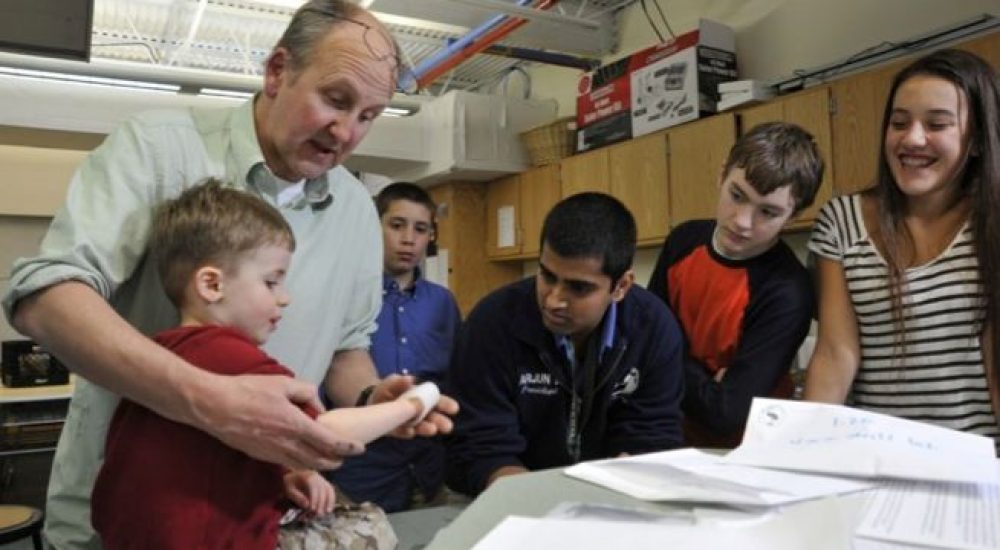Projects that unfold outside the regular school day create opportunities for students to explore personal interests, tackle challenges, build new skills, and sometimes even improve their communities in the process.
I’ve seen students use this rich learning time to monitor local air quality, invent devices to improve life for children with disabilities, design digital games and apps, and run their own multimedia publishing centers. “It’s all about what kids want to do,” one facilitator told me.
Student interest is an excellent starting place for out-of-school-time projects. To make the most of these opportunities, however, it helps to have a good understanding of project-based learning (PBL) strategies. By leveraging best practices for high-quality PBL, we can help our students “take an idea and just soar,” as a veteran OST staffer told me.
What do you need to know to get started with PBL? Here are a few tips:
Lead with questions.
PBL is all about learning through inquiry. While doing projects, students make their own meaning by asking—and answering—questions that matter to them. Good questions for PBL are open-ended. That means you can’t Google your way to a solution. In fact, there may be many “right” answers. (For example, consider the many ways students might respond to this question: How can we honor the heroes in our community?) As facilitators, you don’t need to know all the answers. Instead, you’re there to help guide students in their investigations. Prompt their thinking by asking, “What do you need to know now?” Then be ready to support their learning by connecting them with resources and experts who can help.
Middle-school students used out-of-school time to design a low-cost, prosthetic “Robohand” for a three-year-old boy, using a 3-D printer and plenty of ingenuity. (Photo courtesy Rich Lehrer).
Be purposeful about collaboration.
In many ways, PBL mirrors the way that work gets done in the world outside of school. Across a wide range of professions, authentic problem solving is accomplished through collaboration. PBL offers an ideal content to help your students get better at teamwork. Help students see why collaboration is essential for project success. Perhaps a project is too big or too complex for one person to tackle alone. Or maybe diverse perspectives will yield better results. Don’t assume that students know how to collaborate, either. Be deliberate about teaching and modeling skills such as active listening, disagreeing respectfully, and offering peer critique. These skills will be useful not only during the project, but in life!
Encourage student voice and choice.
Boost the engagement factor in PBL by making sure students have voice and choice in projects. Involve them in project planning by finding out about their personal interests, questions they wonder about, or issues that concern them. During projects, give students freedom to decide how they will apply what they are learning. What will they make, present, or share as a result of the project? Don’t be surprised if they come up with ideas that you didn’t imagine!
Share results.
Sharing project work publicly is another key strategy for PBL success. Having an authentic audience motivates students to do their best. Public showcases also let students know that their good work is valued by the community. We all know the benefits that come from stronger ties between kids and community.
I’ll be explaining these PBL strategies, and more, in greater detail at a Master Class offered during the upcoming BOOST Conference. I hope you’ll join me on Thursday, April 30, from 10:30 a.m to 12:15 p.m., for an interactive exploration of “PBL in Out-of-School Time: Strategies for Deeper Engagement, Authentic Learning.” Hope to see you there!
For breakfast, I had my usual – Cheerios, a banana, and plenty of strong coffee!
 Suzie is a journalist who writes about the power of teaching and learning to improve lives and transform communities. Author of Bringing Innovation to School: Empowering Students to Thrive in a Changing World and co-author of Reinventing Project-Based Learning: Your Field Guide to Real-World Projects in the Digital Age, Suzie is inspired by educators who push the boundaries of the traditional classroom. Suzie is on the National Faculty of the Buck Institute for Education, and has also helped nonprofit organizations design programs that teach both youth and adults how to improve their communities with innovative, sustainable solutions.
Suzie is a journalist who writes about the power of teaching and learning to improve lives and transform communities. Author of Bringing Innovation to School: Empowering Students to Thrive in a Changing World and co-author of Reinventing Project-Based Learning: Your Field Guide to Real-World Projects in the Digital Age, Suzie is inspired by educators who push the boundaries of the traditional classroom. Suzie is on the National Faculty of the Buck Institute for Education, and has also helped nonprofit organizations design programs that teach both youth and adults how to improve their communities with innovative, sustainable solutions.
